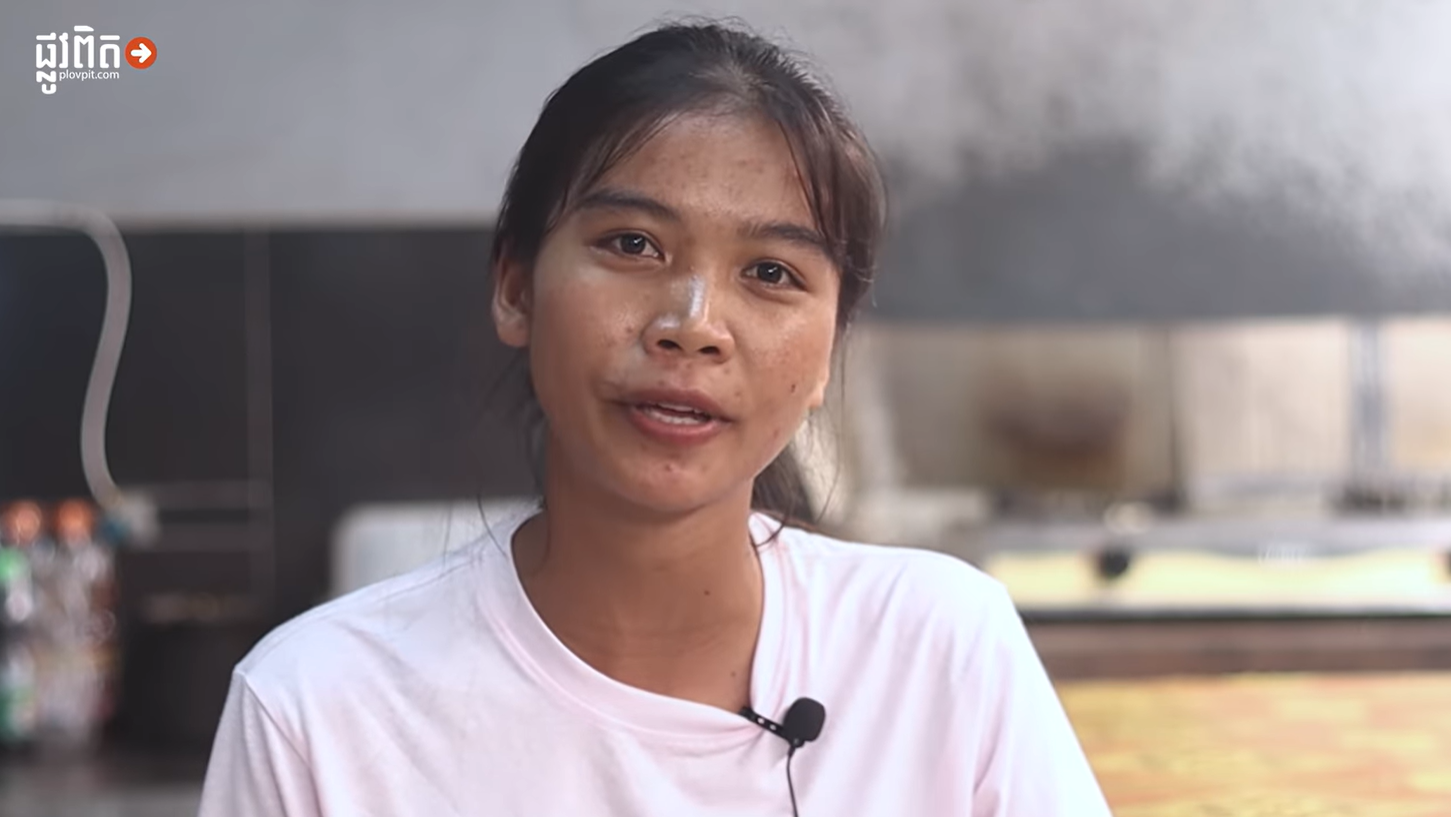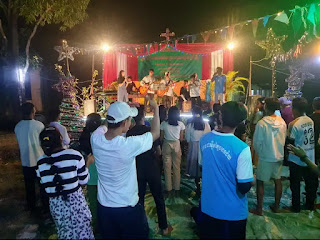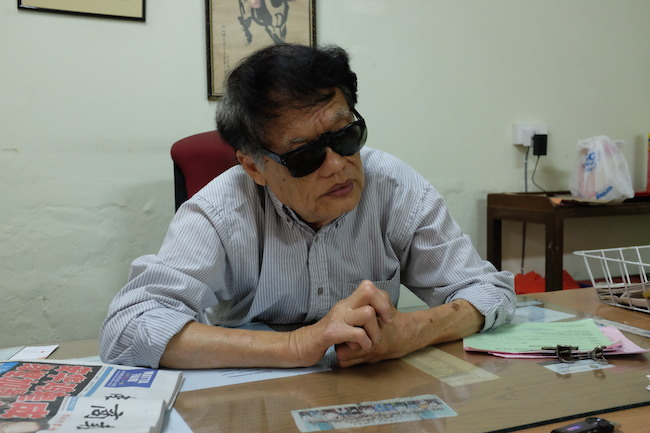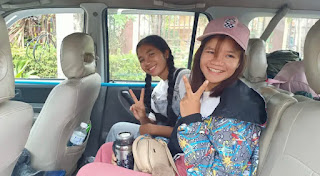There is a danger and a responsibility in being the "resident expert" on a place. For many in the US, I am the only person they will ever meet who has lived in Cambodia. In a one-minute, five-minute, or even hour-long conversation, how will I speak about Cambodia? How will I convey the highs and lows of my experiences, the ways I perceived the Cambodian people, the trends I see in their culture? It's tempting to vent about my frustrations and tell the stories that make me look good. I want to heed writer Chimamanda Ngozi Adichie's warning and avoid presenting a "single story." Cambodians are diverse; their culture is nuanced; my own cultural lens remains thick and clouded.
On Sunday, I spoke to a church's missions team. They asked me how I see Cambodians embracing Christianity. I discussed a problem I see: Cambodians professing Christ after experiencing healing from sickness, but never gaining a thorough understanding of the Gospel that compels them to continue walking with the Lord long-term. In the moment, thinking on the fly and trying to be succinct, I didn't mention the cultural context demanding a different approach than I'm used to. I presented an unfair "single story" that is actually more nuanced. I wrote back to them today to share some additional factors:
- Jesus initially demonstrated His power and sovereignty through signs and wonders such as healing illnesses and casting out demons. I believe what I've heard from some missiologists, that it's common for signs and wonders to occur in groups that are encountering Christ for the first time. They can't see the testimony of people they trust whose lives have been transformed by Christ. In that initial introduction, God often reveals Himself through things they can see. By contrast, mature believers or communities of faith might experience occasional supernatural events, but they don't need to rely on seeing supernatural evidence like this because there is a local testimony of God's faithful presence. In our province, 20 years ago there were about a dozen believers and no churches. In a society that requires conformity and says, "To be Cambodian is to be Buddhist," people need a concrete reason to buck the norm. Signs and wonders help give them the courage to consider an alien worldview.
- Many Cambodians see the concrete and spiritual realms as intertwined. Cambodians typically don't have health insurance or savings. They are physically vulnerable in ways that we Americans typically are not. And they have very little knowledge of health and medicine. Americans can idolize money and medical care, with a false dichotomy between the material realm and the spiritual realm (ex. if I recover from this illness, it's because of these drugs or doctors I paid for, not because of God's blessing). By contrast, many Cambodians will seek spiritual solutions to daily problems like health, weather for farming, or employment. Seeing that God answers their prayers in concrete ways is an essential component of many Cambodian Christian testimonies. As a Westerner who tends to separate the physical and spiritual realms, I can be condescending toward people who see spiritual causes to much of life, when I am prone to make the opposite error, seeking earthly solutions instead of trusting God to intervene. I have a lot to learn from Cambodian believers whose poverty has taught them to seek God first and finances second. Jesus warns us often about the danger of riches!
- Coming from a fear-power worldview, Cambodians need to see that Jesus has greater power over their daily lives than other spirits. For example, a house church started about 5 years ago when a woman was close to death and the witch doctor told her she needed to remove a demon-possessed pillar from her house in order to recover. Christians prayed for her, she recovered with the pillar still intact, and her family became confident that Jesus is Lord over all and worthy of their worship. Likewise, I know a guy who wanted to profess faith so he could marry a Christian girl - not the best motivation. But he became convinced that Christianity was true when he cut off all his amulets (meant to appease certain spirits) and the spirits didn't attack him. Because he stayed healthy and safe after committing to Christ, being baptized, and stopping all his animistic practices, he started to believe that Jesus really was sovereign over the spirits he'd always feared and served. If people just hear about Jesus saving their souls, they can combine animism with Christianity like they used to with Buddhism: Christianity covers them after death, but animism is still how they operate day to day. They need to know that Jesus is enough for them in both life and death.
- Many Cambodians have come to Christ through a Christian hospital in Phnom Penh, where they receive quality care with compassion and dignity, in stark contrast to their treatment elsewhere. They also hear the Gospel there. To go, they have to be referred by a church or missions agency that has an existing relationship with them. So they are experiencing God's love for them through Christ-followers who pray for them to God, the ultimate Healer, and tell them about Jesus being the reason for this kind treatment. And when they return home, someone local can follow up and help them keep growing. Obviously, not all patients who profess faith stick it out, but a number of new believers and church plants nationwide have resulted from this hospital and its referring partners. I have no issue with people coming to faith through physical healing, as long as they grow toward trusting Christ no matter the circumstances. They shouldn't expect constant physical healing and zero suffering because of their walk with the Lord... that's the prosperity gospel, which unsurprisingly has made inroads into Cambodia.
- Trauma has stunted many people's brains. Trauma comes not only from the genocide in the 1970s, but from the Vietnamese occupation through 1991, domestic abuse, substance abuse, physical risks around machines and extreme weather, tropical diseases, and other common ways poor Cambodians have suffered. It is much more difficult for them to learn new things, especially combined with low rates of formal education and schools that don't teach critical thinking. Families pass down Buddhist and animist practices without explaining any philosophical foundation. Their thinking is very grounded in concrete, day-to-day issues like farming and raising children. Even remembering a simple story about Jesus a week after hearing it is difficult for many village people. Our Cambodian partners with YWAM mostly have a high school education and way more Bible knowledge than many villagers are able to process. They tend to take a simpler approach and emphasize a few basic truths: "Jesus loves you. He cares about your daily problems and struggles. He wants to answer your prayers and take care of you forever. He can take away your sin. You don't have to be afraid anymore."
- There are no easy answers about the best approach for this population. World Team has trained the YWAMers, house church leaders, and new believers in a more thorough 15-minute "Creation to Christ" story and drawing, which some villagers are able to grasp and retell, while others struggle even with repeated exposure. My teammates have worked hard for 20ish years to simplify Biblical truths more and more and express them in ways that resonate with our partners, house church leaders, and the general population. Our "School of Applied Ministry" for house church leaders takes people through the whole Bible but is designed so that even illiterate people can complete it. The goal is that house church leaders can pass on some of these key teachings, such as a "Walk through the Bible"-type overview of key themes, to local church members regardless of their exposure to formal education. I had a big learning curve in PV province realizing the limits of people's academic abilities and trying to engage them or evaluate their spiritual condition. (In the capital, Phnom Penh, I worked with students and teachers who had a much higher education level. And even in PV, I focused more on the high school students and recent grads, who were much easier to teach.) Maybe some villagers who say they're Christian have a sweet, simple, childlike faith. Maybe others don't yet understand enough to receive salvation and they need to be taught in a better way that helps them grow toward thorough comprehension. The situation requires a lot of prayer and effort in reliance on the Spirit.
- Cambodia has challenged my paradigms about effective evangelism and discipleship. While as a Westerner, I tend to value head knowledge, I can see the beauty of someone living out the little bit that they know... choosing to trust God in their daily lives even if they can't give a lecture on why God is trustworthy. I still want to see evangelism in Cambodia improve, but I'm realizing the limits of my default methods and assumptions. That's one way I see the benefits of Cambodians and foreigners working side by side, to challenge each other's thinking and spur each other on toward more fully and appropriately conveying Christ to unreached communities.





















































